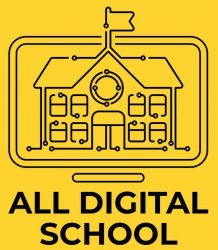
Teaching with Technology: Adjusting Lessons to Fit Low Tech Students
Teaching with technology and having low-tech students: is it even possible? Sure, they don’t sound like a match, but you can teach low-tech students by making your online lessons more accessible for everyone.
In this post, we wrote about what teaching with technology means today. We also listed some tips on how to adjust your lessons for your low tech students.
Table of Contents
Teaching with technology today: What it means
Education technology has indeed changed the way students learn. Some students have expressed their love for technology because it helps them learn at their own pace, which is often hard to achieve or maintain in a classroom setting.
With the help of technology, however, they can set more realistic goals and cultivate independence at the same time.
The elephant in the room

Technology has been helping students and teachers exponentially. However, with the abrupt changes and transitions brought by the pandemic, teachers and students need to address the elephant in the room.
Is everyone on the same boat when it comes to distance learning?
Yes and no.
Yes, because everyone is going through a myriad of adjustments. Teachers, students, parents, and even the school employees are gasping for air.
No, because not everyone can cope with the demands of distance learning on the same level. Some students are fortunate to have a steady internet connection, gadgets, and a comfortable learning environment. Meanwhile, other students don’t even have computers at home, let alone an internet connection.
So, is teaching with technology still possible in this climate?
This is where adjusting the lessons for low-tech students will come in.
Who are the low-tech students?
Low-tech students are not just learners who lack access to technology or internet connection. They can also be students who are reluctant to learn online by personal choice.
Most probably, these students dislike or fear technology. They might get intimidated by the learning curve of the distance learning schedule and the learning software. This is understandable because some schools use more than two learning management systems (LMS). Being exposed to this can easily overwhelm a student.
Read: How To Create Lesson Plans For Students With No Internet Access
Another type of low-tech students are pupils with physical and learning disabilities. Some may be visually impaired and require speech-to-text technology. Others are more visually-oriented because they have hearing problems.
Students with learning disabilities, particularly, require special attention and individualized instruction the most. This, in turn, makes low-tech or no-tech teaching the most viable teaching approaches to teach them.
Read: No Tech Teaching: How To Maintain Student Interest While Home Learning
So, how can you make sure to tend to all your students, including the low-tech ones?
Teaching with technology: How to adjust lessons to fit low tech students

We know technology can be intimidating, even for digital natives such as your students. Below, we will provide you with some tips and strategies on teaching with technology to low-tech students.
1. Get support from organizations.
Even though you’re adjusting your lessons for your low-tech students, you will still use technology to prepare your lessons. These apps or software programs will help streamline your tasks. As a result, you can make sure your students get the instruction they need. We suggest you visit the Center for Teaching and Learning, IT Connect Learning Technologies, and EdTech: Focus on Higher Education.
2. Introduce the software or apps that you’re going to use.
Don’t just tell your students which app or software program you’re going to use. They may be digital natives, but not all of them have a prior understanding of how educational apps should work in their favor. So, they might need some extra context from you. By introducing the app, you can teach them how to properly use it.
You may introduce the apps in an email or show a demo in a weekly scheduled video conference call. If not everyone has internet access, you can record a video of yourself using the app and explaining the features they need to learn. After that, you can send the video to their parents via their work email. They can watch it and then introduce the app to their kids.
3. Write more detailed instructions.
If you were against spoon-feeding instructions at school, you might want to get used to it now. Your students might easily misinterpret written instructions that are vague and poorly written. Now, add that to the fact that you’re not around to explain it to them. Plus they can’t easily get in touch with you to ask for clarification. So, don’t just risk it. Take the time to provide more details in your instructions. You can even include Frequently Asked Questions (FAQs) in your worksheets, emails, or guides.
4. Use shorter sentences.
We know we suggested that you provide more detailed instructions. However, that doesn’t mean you cram longer sentences with unnecessary information in them. Make sure to use shorter sentences—save the words for those sentences that direly require more context.
We also recommend that you use active voice more often. Using passive voice will clutter your sentences and requires you to use more words. Now, if you want to check your writing’s readability, check out the Hemingway Editor. They also have an offline version that costs $19.99.
5. Send differentiated instructions before you distribute lessons.

Sending instructions before each lesson will help establish clear goals. This way, even if your students will work on their own without your supervision, they will still know what they’re working towards. They are not just absorbing information or answering questions. Now, as their teacher, you should provide variety in the instructions.
The good news is you can easily create differentiated instructions with your own smartphone apps. First, you can film a video using your smartphone camera and upload them to Google Drive. You can also record voice notes, create graphs and concept maps, or write on documents. Attach all of these to your emails, so you can accommodate everyone, even those who are auditory learners.
Read: Low Tech Assistive Technology: 21 Tools All Teachers Must Use
6. Avoid chat rooms if you can.
Besides requiring an internet connection, creating chat rooms might occupy a huge chunk of your students’ time. You may allow them to create group chats on their own, but if you can, avoid making chat rooms for the whole class. But why avoid them?
In chat rooms, instructions can easily get lost—you and your students will send message after message, drowning out the important stuff. They are more likely to backread the conversations, instead of reading the instructions right away. So, provide the instructions via email first.
7. Teach them the terms they might not understand.
Along with your instructions and FAQs, you may also want to send out a list of jargon and terms in your materials and worksheets. Students with an unstable internet connection may find it time-consuming to google what certain words mean. Sure, they can download dictionary apps or read their dictionaries at home, but some students need more context to understand concepts.
So, if ever you find many unfamiliar words in your materials, try to edit them and use recognizable words instead. If you want to, you can always include a list of definitions in your modules and their usage in sentences.
8. Encourage note-taking.
Note-taking will only require their listening and analytical skills. It will only require internet connection if you want fact-based statements in their worksheets. However, if you have provided worksheets or video and audio lessons, you can definitely encourage note-taking. You can also assign them to write short paragraphs about what they learned. This will enhance their organizational skills and improve their focus.
Conclusion
As you can see, teaching with technology is not impossible when you have low-tech students. Just use the technology to channel your empathy and to accommodate their learning pace. Technology should never be a barrier to learning; instead, it should be a stepping stone to a student’s improvement and growth.
Related questions
What is a low-tech approach to learning?
Low-tech approach in learning means students won’t need to use high-tech gadgets to participate and learn. Instead, they use their own knowledge and experiences to acquire new learnings.
What are low-tech learner-centered activity examples?
Low-tech, learner-centered activities include role-playing, journaling, drawing, gardening, etc. Any kinesthetic activity can be low-tech and learner-centered.
Know more about teaching with technology here.
All Digital School aims to help parents and teachers like you navigate online education. We have resources and guides if you need help choosing apps and programs.
We also have a community forum where you can share tips and ideas with other moms, dads, and teachers.
Want instant access to all of those? You can sign up by clicking the button below.
You can also sign up through these social media buttons.
Do you have some tips on teaching with technology and adjusting lessons for low-tech students? Let us know in the comments below!







Recent Comments